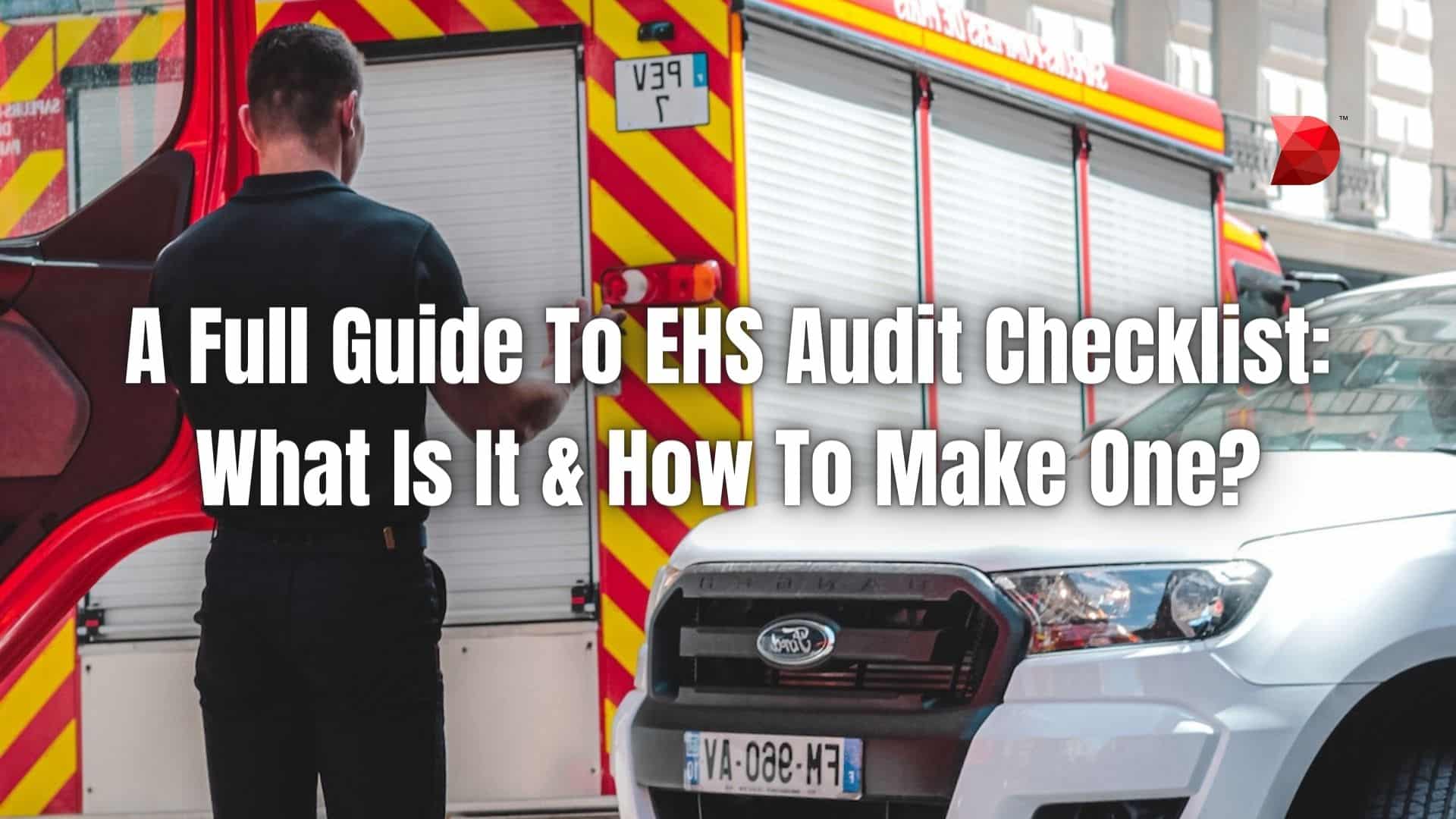Last Updated on December 28, 2022 by Ossian Muscad
Environmental Health and Safety (EHS) audits are essential to any organization’s risk management program. The purpose of these audits is to identify potential hazards and risks that could lead to injury or illness and environmental damage. To ensure compliance with regulations and standards, organizations must develop a comprehensive EHS audit checklist covering all operations areas.
This guide will cover what an EHS audit checklist is, why it’s important, how to make one, and provide you with some tips for conducting successful audits. By the end of this Guide, you should have a better understanding of what makes up a practical EHS audit checklist and be able to create one for your organization.
What is an EHS Audit?
An Environmental Health and Safety (EHS) audit is a comprehensive inspection of an organization’s operations to evaluate its compliance with environmental, health, and safety regulations and standards.
The audit aims to identify areas where improvements can be made to reduce hazards, comply with specific rules and regulations, and ensure that employees are properly trained on safety protocols.
Why is Conducting EHS Audits Important?
An EHS audit is essential for maintaining workplace safety. The United States Occupational Safety and Health Administration (OSHA) requires employers to assess their workplace for potential hazards and take action to reduce the risks. An EHS audit can help ensure that your organization complies with these regulations.
In addition, conducting regular audits helps identify areas where improvements can be made to make workplaces safer and more efficient. By taking proactive steps to improve safety, organizations can reduce the risk of accidents and illnesses in the workplace.
What is an EHS Audit Checklist?
An EHS audit checklist is a comprehensive list of safety and environmental regulations, standards, and policies that must be met to ensure compliance. This checklist should include all areas of operations, from general safety to chemical handling, hazardous materials management, and more.
The checklist should be reviewed and updated regularly to ensure an accurate risk assessment. By creating a comprehensive audit checklist covering all operations areas, organizations can easily identify potential hazards and take the necessary steps to reduce risks.
What To Include in an EHS Audit Checklist?
When creating an EHS audit checklist, it is essential to include all areas of operations. While EHS audit checklists vary depending on the type and size of organization, here is a list of items that should be included in your checklist:
- [ ] Incident reporting and investigation procedures
- [ ] Documentation of safety audits and inspections
- [ ] Hazardous materials management
- [ ] Chemical handling procedures
- [ ] Compliance with environmental regulations
- [ ] Personal protective equipment (PPE)
- [ ] Occupational health and safety policies
- [ ] Emergency preparedness plans
- [ ] Fire safety protocols
- [ ] Details on emergency exits, alarms, and evacuation plans
- [ ] Training and certification requirements
- [ ] Accident prevention guidelines
- [ ] Guide on proper health and safety practices
- [ ] Records of corrective actions taken in response to audit findings
- [ ] Training and education programs
How to Make an EHS Audit Checklist?
Creating a practical EHS audit checklist requires careful planning and thorough research. Here are important steps to help you get started:
- Identify workplace hazards: Start by identifying all potential workplace hazards and document them in your checklist.
- Analyze risks: Conduct a risk assessment to identify high, moderate, and low-risk hazards.
- Develop safety protocols: Once the areas of risk have been identified, develop policies and procedures to address the risks.
- Implement safety systems: Ensure that all safety protocols are being implemented and documented.
- Monitor and review: Finally, monitor the effectiveness of the safety systems and review the checklist regularly to ensure it is up-to-date.
By following these steps, organizations can create a practical EHS audit checklist that will help ensure workplace safety and compliance.
Create EHS Audit Checklists using a Low-Code Platform
With today’s technology, creating an EHS audit checklist is easier and more convenient than ever. Low-code platforms, in particular, allow organizations to quickly and easily create custom checklists that can be used to audit their workplace.
DATAMYTE is a quality management platform that offers low-code capabilities. With its Digital Clipboard, you have software that features a low-code checklist builder. Using this tool, you can create comprehensive EHS audit checklists to help your inspection team conduct effective and efficient audits.
This platform also offers the ability to track, report, and monitor safety compliance with ease. With its integrated analytics and reporting capabilities, you can easily analyze the results of your inspections and take corrective action.
That’s not all—DATAMYTE also lets you conduct layered process audits, a quality technique focusing on monitoring and validating how products are created instead of inspecting finished products. In the context of EHS audits, you can use LPAs to conduct assessments on every phase of your EHS audit process to ensure that all standards are being met.
With the DataMyte Digital Clipboard, you have an all-in-one solution to creating comprehensive checklists and implementing them into your EHS audit process. Book a demo with us today to learn more about how to create a practical EHS audit checklist using our platform.
Conclusion
EHS audits are essential to maintaining a safe and compliant workplace environment. Following the steps outlined in this article, you can create a comprehensive EHS checklist that will help you audit your workplace effectively. At the same time, using a low-code platform like DATAMYTE will streamline the process of creating and managing your EHS checklists, making it easier to monitor and improve workplace safety.



